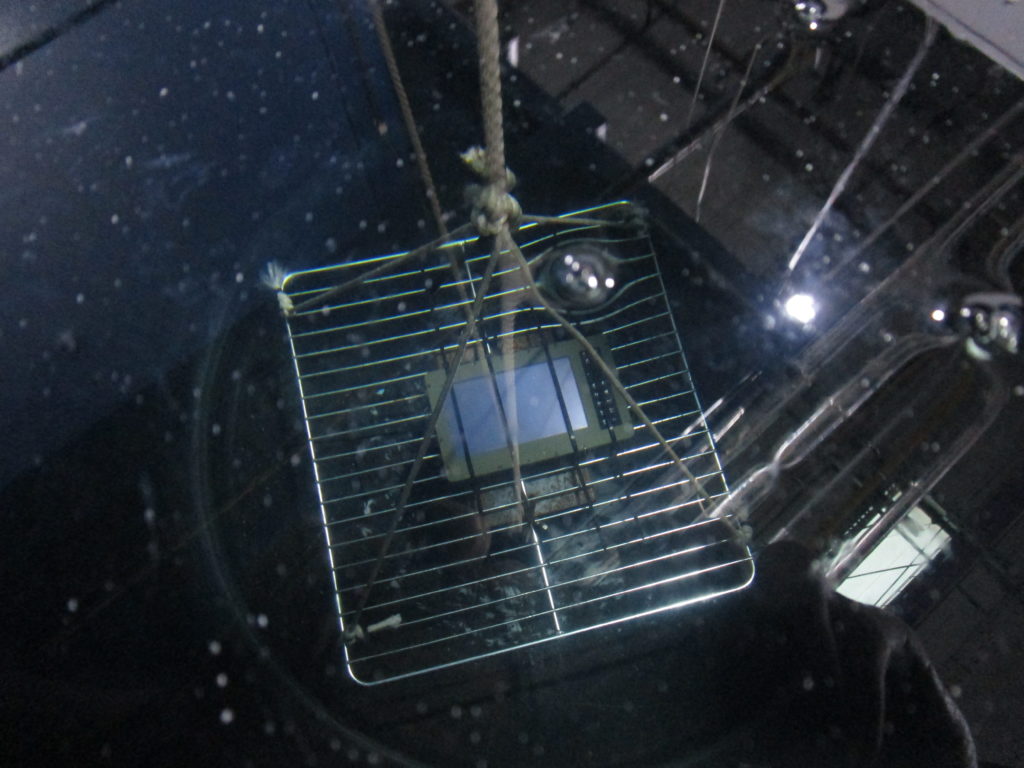Ruggedisation is a term readily used in the defence industry due to the demanding conditions that military systems have to endure, but the criteria for calling a system rugged is broad. In this blog we look at different ruggedisation standards used in defence, as well as the GRiD approach to ensuring that our products meet operational requirements.

GRiDCASE 1590 during sand and dust testing
The majority of military systems have to be ruggedised to some degree due to the environments that the technologies have to operate in. From the arid military arenas of the first part of the 21st century to the Baltic conditions of current deterrence operations in eastern Europe, NATO and its allies often have to operate in diverse and extreme conditions.
As a result, the term rugged is commonplace across the defence industry, and it goes without saying that for most procurements some sort of ruggedisation will be required. To prevent confusion and to assist the myriad stakeholders across the acquisition cycle, various published standards are in place for the design, development and testing of rugged equipment.
What are environmental defence standards
In order to be categorised as military-grade rugged, a system needs to undergo environmental testing to assess whether it can withstand a number of extreme conditions that could impact its performance, reliability and safety. These tests will be in line with published standards that the customer has identified as relevant to their needs.
Environmental testing in this case refers to the assessment of the performance of the design and development of a system, not to be confused with environmental stress screening – or ESS – that is functional environmental build testing, which tests the individual products, and is often only carried out at the request of a customer.
In the UK, environmental performance parameters falls under the Defence Standard 00-35 – or Def Stan 00-35 – a six-part standard that sets out the requirements for environmental conditions that a particular military system must be able to operate in. There are many defence standards across the UK MoD’s standardisation programme, and this is one of the most well-known.
As a key customer for GRiD, we have significant experience in ensuring our products meet the UK’s Def Stan 00-35 standards.
Likewise, in the US, environmental testing falls under the established Military Standard 810, or MIL-STD-810, currently in the MIL-STD-810H version that was released in 2019.
What is MIL-STD-810?
MIL-STD-810 – or the ‘Environmental Engineering Considerations and Laboratory Tests’ as it is formally known by the US Department of Defense – is the benchmark mil-spec standard for the environmental testing of US military equipment. With a heritage dating back 60 years, MIL-STD-810 has also been adopted by many international militaries to ensure reliability and optimal performance, as well as commonality with the US.
According to the US DoD, MIL-STD-810 involves “tailoring a materiel item’s environmental design and test limits to the conditions that the specific materiel will experience throughout its service life, and establishing laboratory test methods that replicate the effects of environments on materiel, rather than trying to reproduce the environments themselves”.
An official .PDF of the latest MIL-STD-810 standard can be found here.
There are many tests that fall under the standard, such as temperature, shock, vibration, impact, humidity, mould and contaminants, and it is essentially a toolkit of tests that could be required for a system to meet the standard.
Not every programme requires every test to be passed, so a requirements manager will select the required tests for each new acquisition based on the environment that the respective system will need to endure. Rugged can therefore mean one thing, or it can mean 50, so the term ‘rugged’ and ‘MIL-STD-810 compliant’ is very broad.
A system that is certified to MIL-STD-810 could only meet the standard’s shock requirements, for example, or it could meet the criteria for many different environmental factors. So when a system is labelled as rugged, it is worth enquiring about what specific standards the rugged system has been tested to.
On top of military-specific standards, a system can also be Ingress Protection – or IP – rated, a standard developed by the International Electrotechnical Commission (IEC) that gives a system a numerical rating that indicates how protected it is against dust and water. Many commercial electronics are now IP rated, normally indicating that they can withstand a careless owner!
Systems rated as IP67 or even IP68 show that a particular piece of equipment is protected against water and dust hazards and that companies are not simply marketing systems as waterproof/water-resistant or dustproof when they aren’t. While this rating is important, it does not indicate that a piece of equipment is military rugged.

Read more about IP67 ratings here.
As ruggedisation is a rather broad term and can incorporate various standards (and interpretations of standards), it is vital that the customer understands not only the level of ruggedisation that is required, but what trade-offs need to be made in order to have a system that performs optimally at the investment level determined.
How does GRiD ensure that its products are certified rugged?
Companies developing rugged products to standards such as Def Stan 00-35, MIL-STD-810 and IP67/68 have two options: carry out the testing in house, or use an independent third-party test house.
While a company can acquire the necessary test equipment to certify in-house, the lack of third-party verification provides room for error, and problems with a system’s performance in certain conditions can be found further down the line.
We therefore recommend that an independent accreditor carries out environmental testing to ensure that performance to the required specifications is guaranteed.
British test houses must be accredited by the United Kingdom Accreditation Service (UKAS), which is appointed by the government to assess and accredit organisations that provide certification, testing, inspection and calibration services.
These environmental test houses can carry out a range of standard assessments, including ESS, IP rating and environmental.
Standards are also updated when it is deemed that the procedures for testing need to be adjusted, so environmental testing needs to be in line with any updates that are released. Test houses will specialise in ensuring that they are up-to-date on the latest requirements, further ensuring that systems meet the most recent standards.
Not all GRiD products require all environmental testing to be carried out, but we work with our partners and customers to ensure that they meet the relevant standards as required.
Because ruggedisation is at the heart of everything that GRiD does and all of our products are designed from the ground up with defence and military environmental qualification in mind, we are confident that we can meet standards as and when it is required from a customer, and make sure we stay on top of the latest requirements so that our laptops and computers are ruggedised to the relevant requirements.
If you would like to discuss environmental qualification with a member of the team, please get in touch on +44 (0)1628 810 230 or drop an email to sales@griduk.com.

